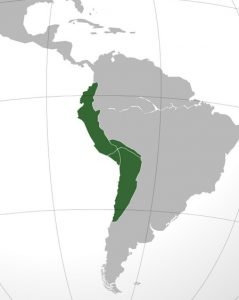Perhaps because of the bias of English-Wikipedia’s editors, their list of the notable events of 1533 CE seems dominated by details in the English monarch’s moves against Papal authority. England’s emergence as an aspirant to global-imperial power will come along some time later but one of its key roots undoubtedly lay in Henry VIII’s leading England and its church out of Rome-dominated Catholicism, which in 1533 effectively meant kowtowing to the Spanish king Charles V, aka the “Holy Roman Emperor”.
So here goes with my take on the list for 1533:
- In late January England’s Henry VIII, having grown bored or frustrated with his marriage to Catherine of Aragon (on whom he’d inflicted numerous pregnancies, though none resulted in a living heir), married Anne Boleyn. 7.5 months later, in early September, Anne would give birth to a girl, the future Queen Elizabeth I.
- Between March and July: Henry (or the special Parliament he’d convened?) named Thomas Cranmer as Archbishop of Canterbury; Cranmer declared Henry’s marriage to Catherine annulled, then crowned the pregnant Anne as “Queen Consort”; and Henry was excommunicated by Pope Clement VII.
- In July, Suleiman the Magnificent concluded a treaty with the Archduchy of Austria under which János Szapolyai, the voivode (warlord) of Transylvania, became King of Hungary under Suleiman’s suzerainty. Some adept central-European diplomacy from Suleiman, it seems.
- In Peru, between July and November: the conquistador Francisco Pizarro executed the Incan leader Sapa Inca Atahualpa then marched further inland to the Incas’ capital, Cusco, which he captured.
Notes on the Incan Empire and other pre-Western Empires

I just want to interject with a personal note here. When I started working on this project to chronicle and thereby gain a deeper understanding of how and why European-heritaged empires came to dominate world affairs over the past 500 years, I was more or less ready to feel the horror/outrage/sadness I knew I would feel on learning more details of the extent of the European conquerors’ extreme violence and oppression and its horrific effects on the subject peoples. What I was not as prepared for was the combined sense of wonder/sadness/outrage I felt on learning more about the amazing world civilizations that preceded– and in most cases were obliterated by–the European colonizers and learning more details about their obliteration.

The Incan Empire was one such civilization. I have known a little about the Incan Empire for several decades, and in 2019 I was lucky to be able to visit this exhibition that displayed many examples of the Incans’ unique method of recording complex administrative details using intricately knotted colored strings, called the khipu (or quipu) and tried to start explaining how it worked…
Anyway, one of the unexpected side-benefits of this writing project has been to put me a little back in touch– however vicariously– with several of those nearly obliterated, pre-“Western” manifestations of human civilization and the human spirit. For the folks who are reading this, I invite you to join me as we sprint through through the record of the past 500 years, in periodically pausing to spend a little time learning more, in wonder, about the some of the extremely rich civilizations that preceded the emergence of this thing we are enjoined to call “Western civilization.” Like the Songhai Empire, which I referred briefly to here, or the Mughal Empire, …

“Western civilization” has a complex relationship with other cultures and civilizations. Proponents of Western civ and those educated within its bosom love to expound upon the superiority of their own culture– which is probably a universal human tendency? But the relationship of “Westerners” with many or most non-Western cultures is a necessarily even more fraught than that, given that (a) Western conquistadors and armies have physically obliterated so many other cultures (and sought to Christianize and Westernize the remaining survivors of those genocidal campaigns), and (b) Many Westerners, from 1492 to today, have a degree of uncertainty about the value of their own culture and an urge to appropriate/expropriate many manifestations of the cultures they colonize.
Back in 1492, Ferdinand and Isabella and their court knew that Muslim artisanal products were far superior to anything their own artisans could produce; richly embroidered Muslim-style dress was de rigueur at their court. Today, we have “Israeli” hummus and “Israeli” falafel… And Western museums are stuffed to the brim with cultural booty purloined from all around the globe over the past 400 years. So I readily acknowledge that for me, being able to learn a little about the Incan khipu, and to see some actual khipus and wonder at the intricate theories behind their use, is a result of Western privilege and Western purloining. But still, I’m glad I had that chance. And I’m glad that all of us, wherever we are, can use the riches of Wikipedia and the rest of the internet to learn about so many of those fascinating and highly developed non- and pre-Western cultures.
